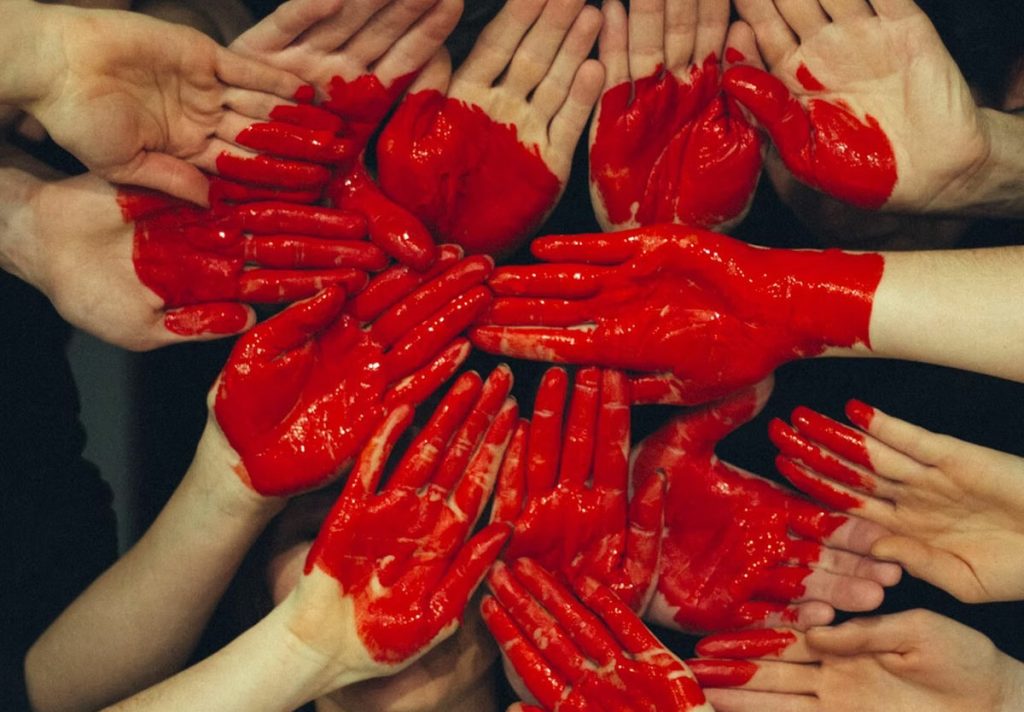Imagine a world where childhood is not about play and education but survival in the harshest conditions imaginable. This is the reality for thousands of children forced into armed conflicts around the globe. Red Hand Day, observed every February 12th, stands as a powerful testament to the global fight against the use of child soldiers. Originating from the "Children, Not Soldiers" campaign in 1998, this day harnesses the universal symbol of a red hand to signify opposition to this grave violation of human rights. Communities worldwide come together, organizing rallies, workshops, and campaigns, all aimed at shedding light on the plight of these young souls and pressing for their release and rehabilitation. Red Hand Day isn't just another date on the calendar; it's a call to arms for the protection of our most vulnerable, urging us to stand in solidarity and take action against this form of child abuse.
Key Takeaway
Day Activities
-
Rallies and Marches: On Red Hand Day, streets in cities around the globe come alive with the vibrant energy of rallies and marches. Participants, often with red-painted hands waving in the air, chant and march in solidarity. Their goal? To make the invisible plight of child soldiers impossible to ignore. These public demonstrations serve as a powerful tool to draw attention and galvanize support for the cause.
-
Educational Workshops: Schools and community centers become hubs of learning and discussion, hosting workshops that peel back the layers on the complex issue of child soldiers. Through interactive sessions, experts and survivors share insights, shedding light on the harsh realities these children face. It's a day when young minds are engaged and encouraged to think critically about global issues, fostering a generation that's informed and compassionate.
-
Art and Social Media Campaigns: Creativity takes center stage as artists and activists harness the power of art and social media to amplify their message. From striking red handprints on canvas to compelling digital content that spreads like wildfire online, these campaigns make the abstract tangible. They not only raise awareness but also create a digital footprint that reaches corners of the world far from the conflict zones, inviting global citizens to stand in solidarity with child soldiers.
Interesting Facts
1. Originated in 1998
The Red Hand Day campaign kicked off with "Children, Not Soldiers" by the Coalition to Stop the Use of Child Soldiers.
2. Symbol of Solidarity
A red hand symbolizes global unity against child recruitment in armed conflicts, representing a pledge to end this practice.
3. Global Awareness
On February 12, activities worldwide spotlight the plight of child soldiers, urging action for their release and rehabilitation.
4. Educational Efforts
Rallies, seminars, and workshops on Red Hand Day educate the public on the critical issue of child soldiers.
5. A Call to Action
This day is a reminder to protect children from armed conflict effects, advocating for their rights and recovery.
Why We Love This Day
-
Raising Awareness: Red Hand Day shines a light on the grim reality of child soldiers. It's a day that pulls back the curtain, showing us the harsh truths about children forced into armed conflicts. Through various activities like rallies and seminars, this day educates and informs people all over the globe about the plight of these young souls. It's a powerful reminder that in some corners of the world, childhood is stolen, not lost.
-
Global Solidarity: On February 12, people from different walks of life come together, united by the red hand symbol. This symbol of solidarity is more than just a mark; it's a beacon of hope and a pledge to fight against the use of children in wars. From school kids to politicians, everyone can join in, making their mark with a red handprint. This collective action demonstrates a global commitment to ending this atrocity.
-
A Call to Action: Beyond awareness, Red Hand Day is a rallying cry for change. It's not just about acknowledging the issue but actively working towards ending the recruitment and use of child soldiers. This day encourages governments, armed groups, and individuals to take concrete steps towards releasing child soldiers and supporting their rehabilitation. It's a day that says, "Enough is enough," and pushes for policies and programs that protect children's rights and futures.
Past & Future Dates
| Month | Day | Year |
|---|---|---|
| FEBRUARY | 12 | 2022 |
| FEBRUARY | 12 | 2023 |
| FEBRUARY | 12 | 2024 |
| FEBRUARY | 12 | 2025 |
| FEBRUARY | 12 | 2026 |
| FEBRUARY | 12 | 2027 |
| FEBRUARY | 12 | 2028 |
FAQ
What is the meaning of Red Hand Day?
Each year, Red Hand Day on February 12th calls upon global leaders to halt the enlistment of child soldiers, serving as a powerful reminder of the need to end this practice. It's widely known as the International Day against the Use of Child Soldiers.
What do you do on Red Hand Day?
Folks around the globe get creative on Red Hand Day. Activities range from orchestrating educational events about child soldiers at schools, complete with real accounts from those who've escaped such fates, to rallying students to pen petitions or letters urging political action from local and national leaders.
Who started Red Hand Day?
The inception of Red Hand Day traces back to a UN initiative in 2002, designed to boost the worldwide effort to prevent children from being recruited and used in armed conflicts.
How many child soldiers are there in the world?
In today's conflicts, marked by increasing brutality and a wider spread, children are among those most at risk. Current estimates suggest there are about 300,000 child soldiers embroiled in wars in more than 20 countries across the globe, with girls making up to 40% of this number.
